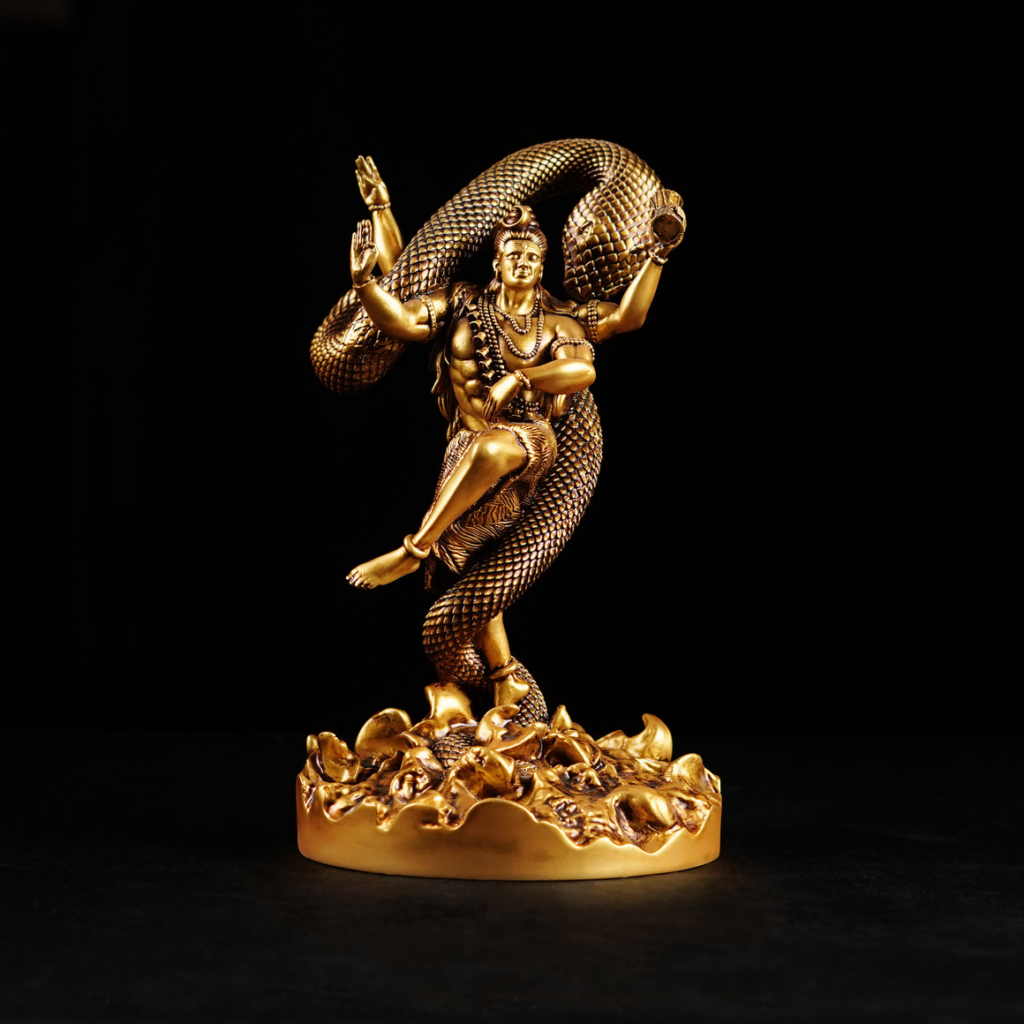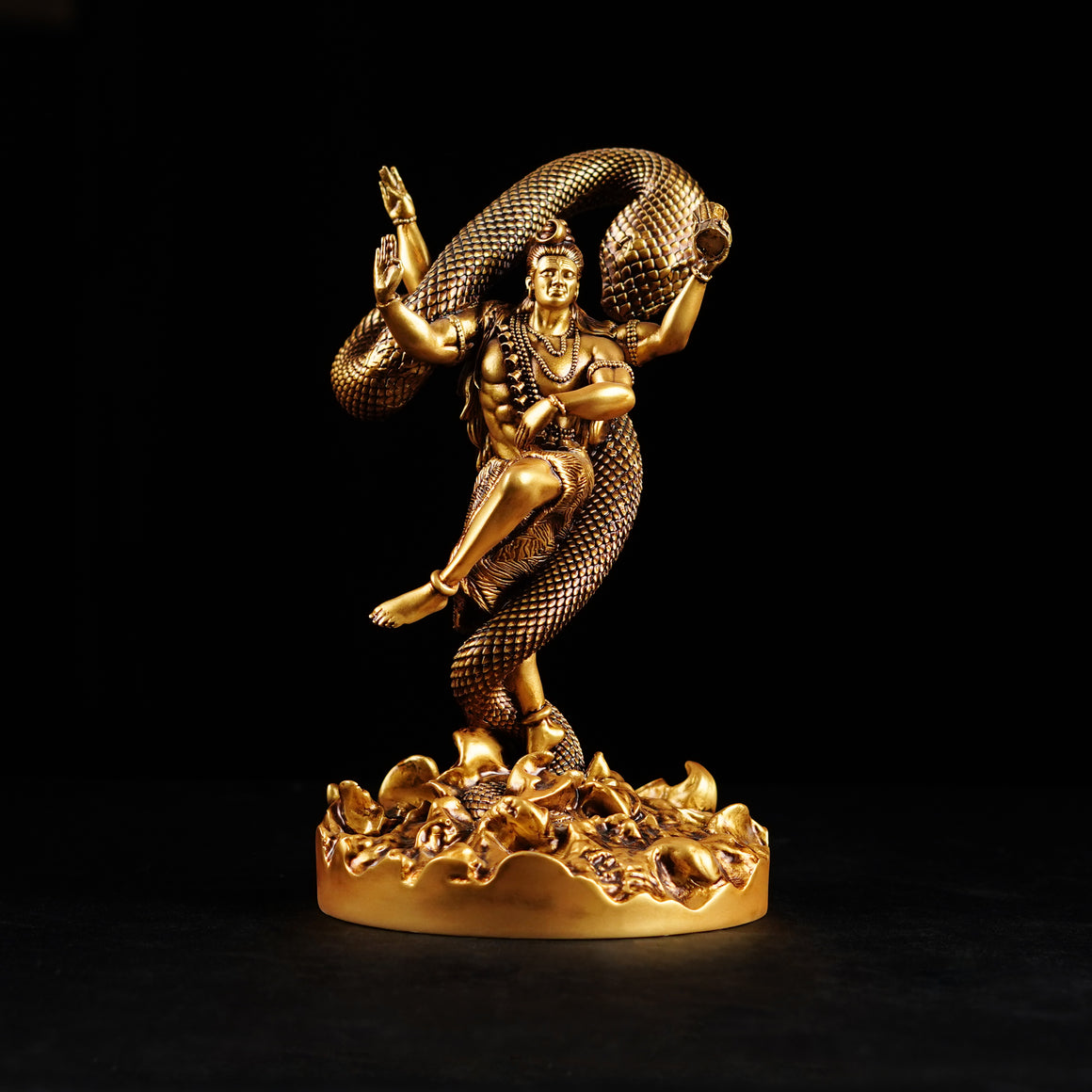Lord Shiva, one of the principal deities of Hinduism, is revered as the destroyer and transformer within the Trimurti, which also includes Brahma, the creator, and Vishnu, the preserver. Representing the ultimate reality and the cycle of birth, death, and rebirth, Lord Shiva embodies both the ascetic and householder, the fierce destroyer of evil, and the benevolent creator. Statues of Lord Shiva, found in temples, homes, and public spaces, are powerful symbols that encapsulate these divine attributes. This article explores the various forms, symbolism, significance, and spiritual benefits of Lord Shiva statues, shedding light on their enduring presence in Hindu culture and spirituality.

The Different Forms of Lord Shiva Statues
Lord Shiva is depicted in various forms, each representing different aspects of his divine personality and cosmic functions. Here are some of the most iconic forms of Lord Shiva statues:
- Nataraja (The Cosmic Dancer): One of the most celebrated forms of Lord Shiva, Nataraja depicts him as the cosmic dancer who performs the Tandava, the dance of destruction that leads to the creation of the universe. The Nataraja statue is a powerful symbol of the cosmic cycles of creation and destruction, the rhythm of the universe, and the dance of life and death.
- Shiva Lingam (Symbol of Creation): The Shiva Lingam, an abstract representation of Lord Shiva, is a symbol of cosmic creation and the union of Shiva and Shakti (the divine feminine energy). The Lingam is often worshipped in temples and homes, representing the infinite nature of Shiva and the source of all existence.
- Ardhanarishvara (The Androgynous Form): Ardhanarishvara is a unique form of Lord Shiva, depicted as half-male and half-female, symbolizing the union of masculine and feminine energies. This form represents the concept of duality in the universe and the balance of opposites.
- Shiva as Mahadeva (The Great God): In this form, Lord Shiva is depicted as a serene and powerful deity, often seated in deep meditation or standing with his trident (Trishul). This form emphasizes Shiva’s role as the supreme god, the source of all knowledge, power, and spiritual wisdom.
- Shiva as Bhairava (The Fierce Protector): Bhairava is a fierce manifestation of Lord Shiva, often depicted with a terrifying expression, holding weapons to destroy evil forces. This form is worshipped for protection from negative energies and to overcome obstacles.
- Shiva as the Yogi (The Ascetic): In this form, Lord Shiva is depicted as an ascetic meditating in the Himalayas, with matted hair (Jata), a snake around his neck, and a third eye on his forehead. This form symbolizes detachment, spiritual knowledge, and the path of renunciation.
Symbolism of Lord Shiva Statues
Every element of a Lord Shiva statue is rich with symbolism, representing various aspects of his divine nature and cosmic functions. Here are some of the key symbols found in Lord Shiva statues:
- The Third Eye (Eye of Wisdom): The third eye on Lord Shiva’s forehead symbolizes his ability to see beyond the physical world and perceive the ultimate truth. It represents spiritual wisdom, inner vision, and the power to destroy evil.
- The Trident (Trishul): The trident is one of Lord Shiva’s primary weapons, symbolizing the three fundamental forces of creation, preservation, and destruction. It also represents the three aspects of time—past, present, and future.
- The Crescent Moon: The crescent moon on Shiva’s matted hair symbolizes the cyclical nature of time and the power of rejuvenation. It also represents the mind and the control over emotions.
- The Snake (Vasuki): The snake around Lord Shiva’s neck symbolizes his mastery over death and his control over primal energies. It represents the power of Kundalini, the coiled serpent energy that lies dormant within every human being.
- The Ganga (River Ganges): The Ganga flowing from Shiva’s hair represents the purifying and life-giving force of the sacred river Ganges. It symbolizes spiritual purification, the flow of divine knowledge, and the nurturing aspect of Shiva.
- The Damaru (Drum): The Damaru, a small drum held in one of Shiva’s hands, symbolizes the rhythm of the universe and the sound of creation (Om). It represents the cyclical nature of time and the constant process of creation and destruction.
- The Ashes (Vibhuti): Shiva’s body is often covered in ashes, symbolizing the impermanence of the physical world and the ultimate reality of the soul. It also represents the detachment from material desires and the path of renunciation.
- The Tiger Skin: Shiva is often depicted sitting or standing on a tiger skin, symbolizing his victory over the ego and his mastery over animal instincts. The tiger skin also represents the control over desires and the dominance of the spiritual over the physical.
The Significance of Lord Shiva Statues in Hinduism
Lord Shiva statues hold deep spiritual and cultural significance in Hinduism. They serve as a focal point for worship, meditation, and devotion, helping devotees connect with the divine and attain spiritual growth. The significance of Lord Shiva statues can be understood through various aspects:
- Spiritual Enlightenment: Worshipping Lord Shiva statues is believed to bring spiritual enlightenment and inner peace. Devotees meditate on the form of Shiva to gain insight into the nature of reality and to transcend the limitations of the physical world.
- Protection and Strength: Lord Shiva is regarded as a protector of the universe, and his statues are often worshipped for protection from negative energies, evil forces, and obstacles in life. The fierce forms of Shiva, such as Bhairava, are especially invoked for protection and strength.
- Destruction of Negativity: As the destroyer in the Hindu trinity, Lord Shiva is believed to destroy ignorance, ego, and negative tendencies. His statues are worshipped to cleanse the mind and soul, paving the way for spiritual growth and transformation.
- Blessings for Health and Longevity: Lord Shiva is often worshipped for good health, longevity, and overall well-being. The Lingam form, in particular, is associated with fertility, vitality, and the sustenance of life.
- Symbol of Devotion and Surrender: Lord Shiva represents the ideal of devotion and surrender to the divine will. Worshipping his statues helps devotees cultivate humility, devotion, and a sense of surrender to the greater cosmic order.
- Connection with the Divine Feminine: Lord Shiva is inseparable from Shakti, the divine feminine energy. The statues of Shiva, especially in the Ardhanarishvara form, symbolize the unity of male and female energies, emphasizing the importance of balance and harmony in the universe.
Placement and Worship of Lord Shiva Statues
The placement and worship of Lord Shiva statues in homes, temples, and public spaces follow specific guidelines and rituals to maximize their spiritual benefits. Here are some considerations for the placement and worship of Lord Shiva statues:
- Placement in the Home: A Lord Shiva statue can be placed in the northeast corner of the house, known as the Ishaan corner, which is considered auspicious for placing divine idols. The statue should face east or north, and the area should be kept clean and serene.
- Temple Worship: In temples, Lord Shiva statues are placed in the sanctum sanctorum (Garbhagriha), where they are worshipped with rituals such as Abhishekam (ritual bathing), offering of Bilva leaves, flowers, incense, and chanting of mantras like the “Om Namah Shivaya.”
- Meditation: Devotees often meditate in front of a Lord Shiva statue to attain spiritual insight and inner peace. The serene and contemplative form of Shiva as a Yogi is particularly conducive to meditation, helping devotees focus their mind and connect with the divine.
- Festivals and Rituals: Lord Shiva statues play a central role during festivals like Maha Shivaratri, where devotees perform special rituals, fasting, and night-long vigils to honor Shiva. The statues are adorned with flowers, garlands, and lights during these celebrations.
- Offerings: Common offerings to Lord Shiva statues include water, milk, honey, Bilva leaves, white flowers, and sandalwood paste. These offerings symbolize purity, devotion, and the desire to connect with the divine.
The Global Presence of Lord Shiva Statues
The influence of Lord Shiva transcends the boundaries of India, with statues of Shiva being found in various parts of the world. These statues serve as cultural and spiritual symbols, connecting the global Hindu diaspora with their religious roots. Here are some notable Shiva statues around the world:
- The Shiva Statue in Murudeshwar, India: Standing at 123 feet, the statue of Lord Shiva in Murudeshwar, Karnataka, is one of the tallest statues of Shiva in the world. It is a major pilgrimage site and attracts devotees from all over the country.
- The Adiyogi Shiva Statue in Coimbatore, India: The Adiyogi statue, located at the Isha Yoga Center in Coimbatore, Tamil Nadu, is a 112-foot-tall statue of Lord Shiva. It symbolizes the first yogi (Adiyogi) and is a center for spiritual learning and meditation.
- The Shiva Statue in Kathmandu, Nepal: The Kailashnath Mahadev statue in Kathmandu, standing at 143 feet, is one of the tallest Shiva statues globally. It is a significant cultural and religious landmark in Nepal.
- Shiva Statues in Southeast Asia: Statues of Lord Shiva can be found in various Southeast Asian countries, such as Indonesia, Cambodia, and Thailand, where Hinduism has had a historical influence. These statues are often found in ancient temples and serve as reminders of the region’s rich cultural heritage.
Conclusion
Lord Shiva statues are more than just artistic representations; they are powerful symbols of the divine, embodying the principles of creation, preservation, and destruction. Whether in the form of Nataraja, Shiva Lingam, or Ardhanarishvara, these statues inspire devotion, meditation, and spiritual growth. By understanding the forms, symbolism, and significance of Lord Shiva statues, devotees can deepen their connection with the divine and attain the blessings of this great deity. Whether placed in a home, temple, or public space, a Lord Shiva statue serves as a beacon of spiritual light, guiding devotees on the path to enlightenment and eternal truth.
